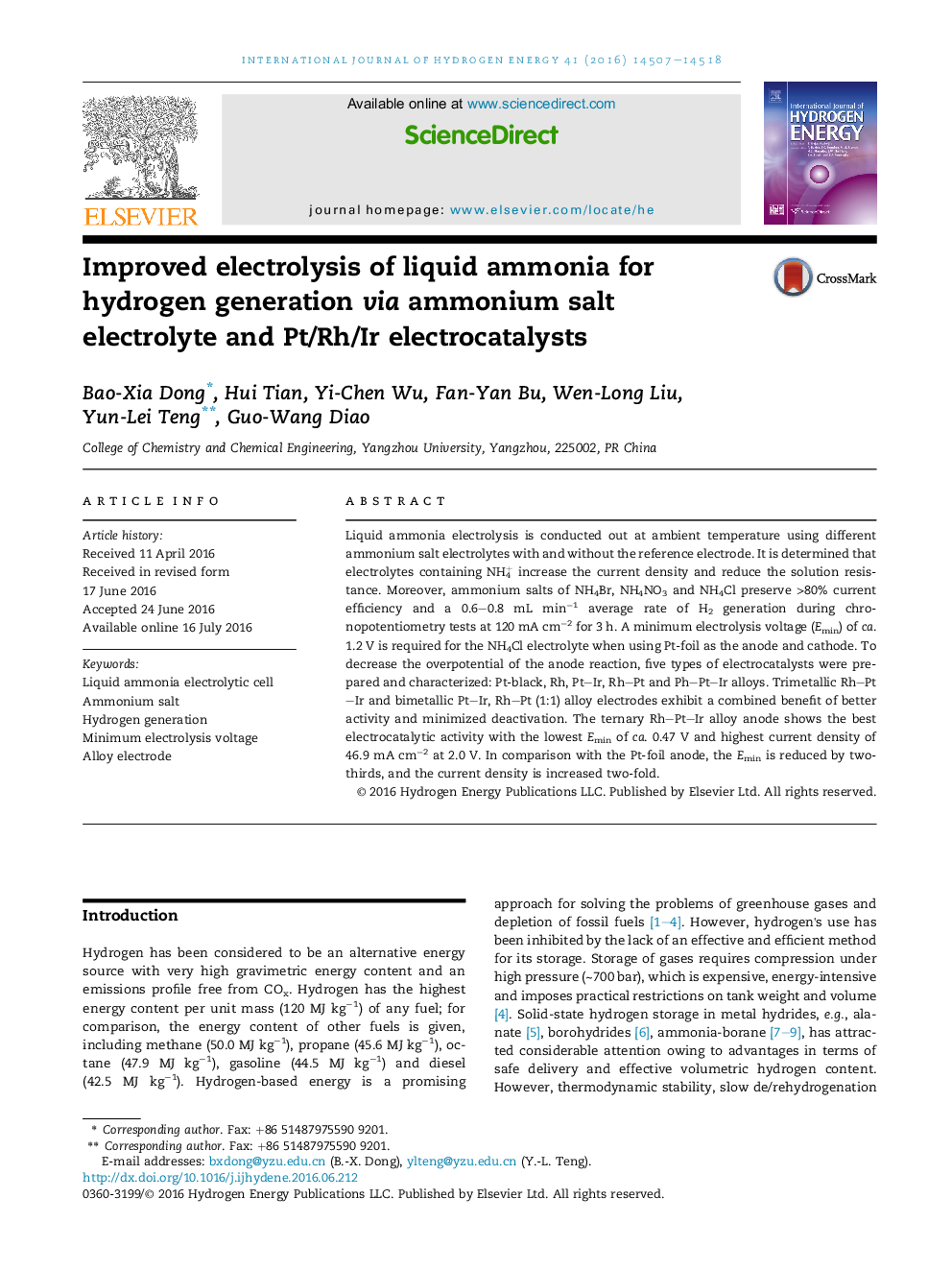| Article ID | Journal | Published Year | Pages | File Type |
|---|---|---|---|---|
| 1269329 | International Journal of Hydrogen Energy | 2016 | 12 Pages |
•A three-electrode liquid ammonia electrolytic cell was developed for generation of hydrogen.•Ammonium salt electrolytes increased the current density and reduced the solution resistance.•Pt-black, Rh, Pt–Ir, Rh–Pt and Ph–Pt–Ir electrocatalysts were prepared and characterized.•Rh–Pt–Ir, Pt–Ir, and Rh–Pt (1:1) electrodes exhibit better activity and minimized deactivation.
Liquid ammonia electrolysis is conducted out at ambient temperature using different ammonium salt electrolytes with and without the reference electrode. It is determined that electrolytes containing NH4+ increase the current density and reduce the solution resistance. Moreover, ammonium salts of NH4Br, NH4NO3 and NH4Cl preserve >80% current efficiency and a 0.6–0.8 mL min−1 average rate of H2 generation during chronopotentiometry tests at 120 mA cm−2 for 3 h. A minimum electrolysis voltage (Emin) of ca. 1.2 V is required for the NH4Cl electrolyte when using Pt-foil as the anode and cathode. To decrease the overpotential of the anode reaction, five types of electrocatalysts were prepared and characterized: Pt-black, Rh, Pt–Ir, Rh–Pt and Ph–Pt–Ir alloys. Trimetallic Rh–Pt–Ir and bimetallic Pt–Ir, Rh–Pt (1:1) alloy electrodes exhibit a combined benefit of better activity and minimized deactivation. The ternary Rh–Pt–Ir alloy anode shows the best electrocatalytic activity with the lowest Emin of ca. 0.47 V and highest current density of 46.9 mA cm−2 at 2.0 V. In comparison with the Pt-foil anode, the Emin is reduced by two-thirds, and the current density is increased two-fold.
Graphical abstractFigure optionsDownload full-size imageDownload as PowerPoint slide
